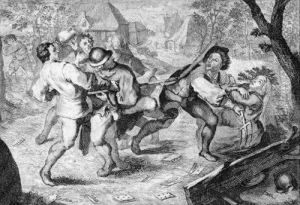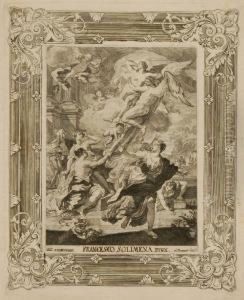Anton Joseph Von Prenner Paintings
Anton Joseph von Prenner was an Austrian artist and engraver born in 1698 in Vienna, Austria. He was primarily active during the first half of the 18th century, a period in European art history known as the Baroque era, which was characterized by dramatic expression, grandeur, and richness in detail.
Prenner received his artistic training in Vienna and soon became known for his skill in engraving. Engraving was a popular art form at the time, allowing for the reproduction of works of art and the dissemination of images across Europe. Prenner’s work included both original compositions and reproductions of paintings by other artists.
Not much is known about Prenner's personal life or early career, but he gained recognition for his contribution to a significant project commissioned by the Holy Roman Emperor, Charles VI. Prenner was involved in the creation of a series of engravings for the publication 'Theatrum Artis Pictoriae' (The Theatre of the Art of Painting), which was a collection of engravings of the paintings in the royal collection of the Habsburgs. This ambitious project aimed to document and showcase the imperial collection and was an important record of the artistic treasures of the time.
Prenner's engravings for 'Theatrum Artis Pictoriae' are considered some of his most important work and were instrumental in spreading the knowledge of the Habsburgs' art collection throughout Europe. His ability to capture the essence and detail of the original paintings in his engravings was highly regarded.
Anton Joseph von Prenner continued to work as an engraver until his death in 1761. Although not as widely known today as some of his contemporaries, Prenner's contributions to the field of engraving remain significant. His work reflects the artistic tastes and cultural ambitions of the Austrian court during the Baroque period and provides insight into the dissemination of art and ideas during the 18th century.





